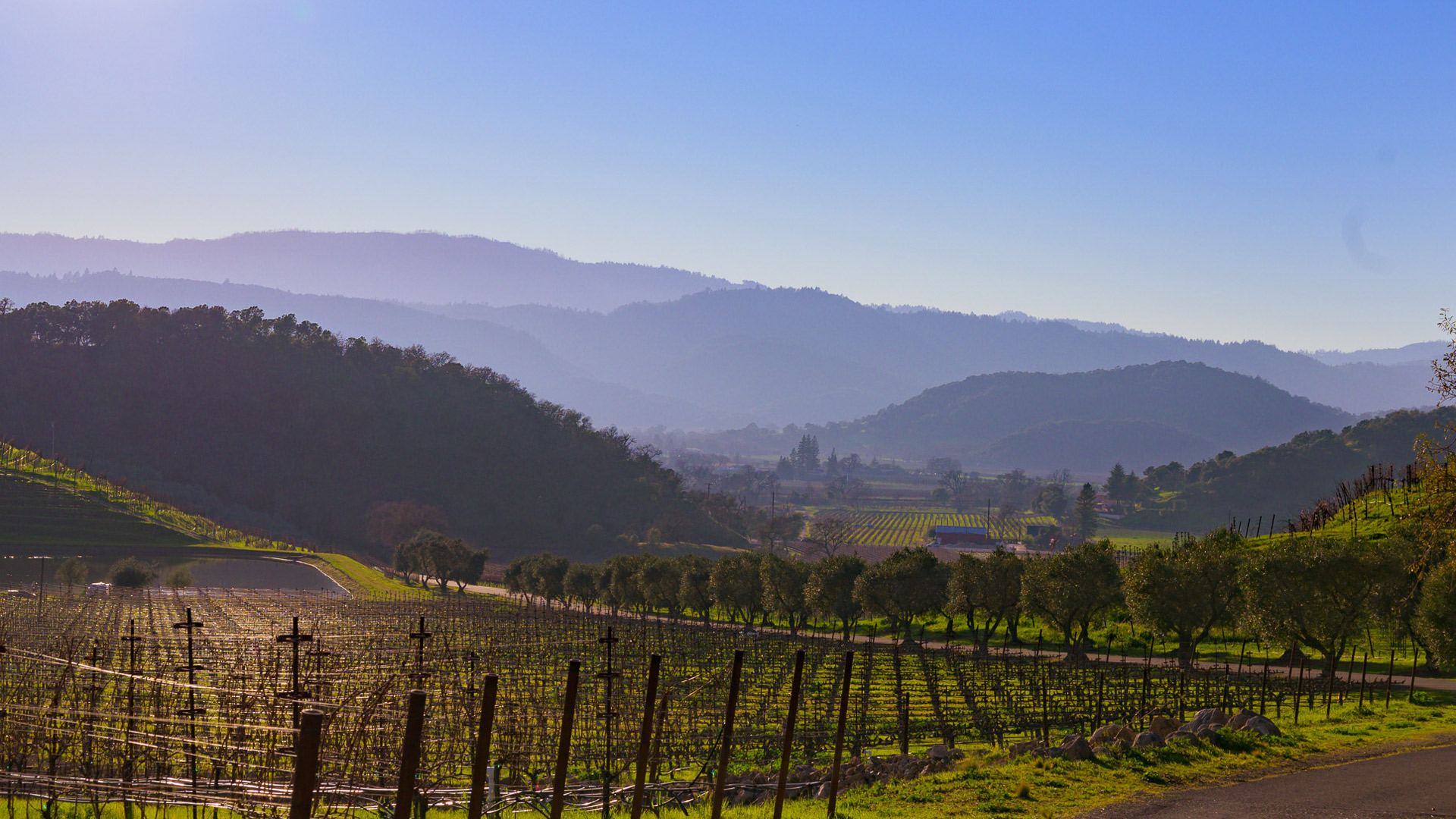Stag's Leap District
Stags Leap District is known for its single vineyards in Napa Valley that are world-famous for Cabernet Sauvignon with an inky black color.
Stags Leap District was made famous overnight at the Judgement of Paris tasting in 1976 when producer, Stag's Leap Wine Cellars, placed first with their S.L.V California Cabernet in a blind tasting against several famous Bordeaux wines.
The event single-handedly propelled Napa Valley – and Napa Cabernet – into the limelight.
Stags Leap District wines to know
As you can imagine, Cabernet Sauvignon is a very important grape in Stags Leap District. But where there's great Cabernet Sauvignon, there's also great Merlot. The two grape varieties make up 80% of what's planted in this "valley within the valley."
Expect to find a selection of all the major Bordeaux varieties including Petit Verdot, Malbec, and Cabernet Franc. Also, you'll find a bit of Syrah and Petite Sirah planted here too – with exceptional intensity.
Stags Leap District wineries and wines to know about
-
Stag's Leap Wine Cellars – The winery that made Napa Cabernet famous has a vineyard called "S.L.V" (Stag's Leap Vineyard) which is the original vineyard from where the grapes came in that pivotal tasting.
-
Stags' Leap Winery – As the story goes, the location of the apostrophe created a million-dollar lawsuit after both wineries with similar names battled it out to protect their brands. This winery makes a stunning Petite Sirah.
-
Shafer – A winery on the benches that grows grapes sustainably and powers the winery with solar energy. In 1984 they championed the idea of hillside single-vineyard wines by naming their wine "Hillside Select."
Stags Leap District Terroir
Stags Leap District sits on the eastern side of Napa Valley below a dramatic geographic feature in the Vaca Range called the Stags Leap Palisades. The bright-colored palisades reflect sunshine into the valley which heats the vineyards faster than the surrounding areas. The geographic feature also cools down the valley at night by funneling cool air from the mountains.
What does this mean for the wines? Well, the consistently warm temperatures throughout the day allow for maximal ripening, while cool nighttime temperatures retain acidity in the wines. The result is wines that taste rich, lush, and opulent.
The gravelly volcanic loam in Stags Leap seems to give the wines here a noticeable mineral note, but instead of being earthy like turned soil, it comes cleaner, like wet slate or pencil lead.
Stags Leap District AVA Facts
Stags Leap District AVA was established in 1989.
The AVA is 2700 acres with 1200 acres of planted land.
The soil of the region is loam and clay sediments, along with volcanic deposits.
Stags Leap grew quickly to fame thanks to the now famous “Judgement of Paris” in 1976 - when the 1973 Stag's Leap Wine Cellars Cabernet Sauvignon won a blind taste competition against French wines.























